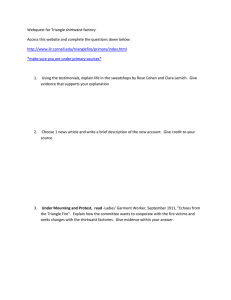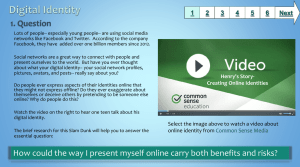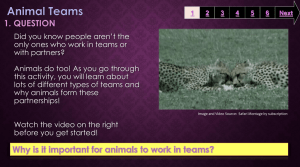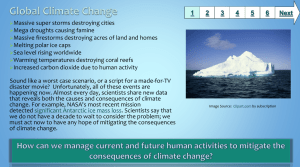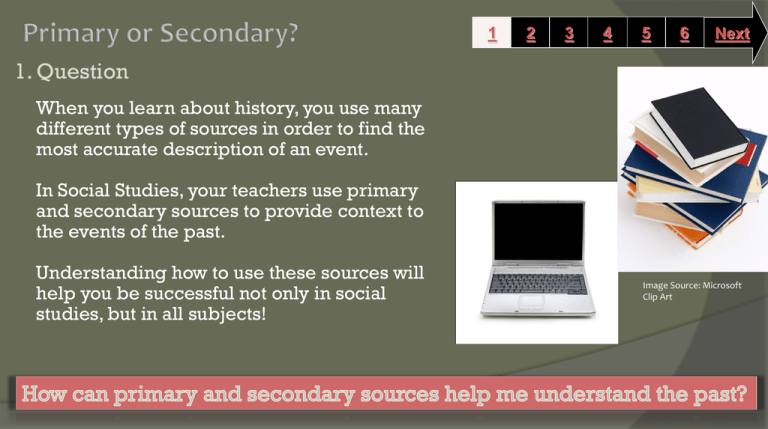
1
2
3
4
5
6
Next
1. Question
When you learn about history, you use many
different types of sources in order to find the
most accurate description of an event.
In Social Studies, your teachers use primary
and secondary sources to provide context to
the events of the past.
Understanding how to use these sources will
help you be successful not only in social
studies, but in all subjects!
Image Source: Microsoft
Clip Art
2. Information Sources
1
2
3
4
5
To activate your prior knowledge
of primary and secondary
sources, view and complete the
interactive tutorial created by
West Oregon University.
Keep the following ideas in mind while you
are completing the tutorial…
Who created it?
What was the reason why it was created?
When was the document created?
Where was it created?
Why was it created?
How is this document viewed by people
(during the time period AND today!)?
Image Source: www.clipart.com by subscription
6
Next
3. Student Activity
1
2
3
4
5
6
Research the Triangle Shirtwaist Fire in
1911 to practice using primary and
secondary sources. Remember to think
about the questions from slide 2!
Working for the Triangle Shirtwaist
Company
Triangle Shirtwaist Factory Fire
Remembering the 1911 Triangle Factory
Fire
Complete the graphic organizer to
demonstrate your understanding of the
sources.
Image Source: DeVault, Ileen A. "Triangle
Shirtwaist Factory Fire." World Book Student.
World Book, 2012. Web. 27 July 2012.
Next
4. Assessment Activity
1
2
3
4
5
6
Next
To demonstrate your understanding of using primary and
secondary sources, choose a topic from the list below.
Current US/World Financial Crisis
2012 Hurricane Sandy
2013 – Trayvon Martin and George Zimmerman incident in
Florida
*Choose your own Current Events topic (approval from your
teacher is required!)
Find one primary source and one secondary source
on your chosen topic using the databases
provided by BCPS. Use a web 2.0 tool of your
choice explaining the difference between the 2
sources of information and how those sources help
you learn about that particular topic.
Image Source: Microsoft Clip Art
5. Enrichment Activities
1
Image Source:
www.clipart.com
by subscription
2
3
4
5
6
Want extra practice with
primary and secondary
sources?
Primary Sources
and Secondary Sources
Self-Test
Evaluating Information
Next
6. Teacher Support Materials
BCPS Curriculum
Grade 8: 1.A.2 Analyze sources of historical information
Maryland State Curriculum
D.1. Identify primary and secondary sources of information that relate to the topic/situation/problem
being studied
D.1.a. Gather and read appropriate print sources, such as journals, periodicals, government documents,
timelines, databases, reference works, and web sites
D.1.b Read and obtain information from texts representing diversity in content, culture, authorship, and
perspective
D.1.c. Locate and gather data and information from appropriate non-print sources, such as music,
artifacts, charts, maps, graphs, photographs, video clips, illustrations, paintings, political cartoons,
multimedia, interviews, and oral histories
D.1.d Access and process information that is factual and reliable from readings, investigations, and/or
oral communications
Common Core State Standards
Reading: 1. Read closely to determine what the text says explicitly and to make logical inferences from it;
cite specific textual evidence when writing or speaking to support conclusions drawn from the text.
Writing: 7. Conduct short as well as more sustained research projects based on focused questions,
demonstrating understanding of the subject under investigation.
Standards for the 21st Century Learner
1.1.6 Read, view, and listen for information presented in any format (e.g. textual, visual, media, digital)
in order to make inferences and gather meaning.
2.1.3 Use strategies to draw conclusions from information and apply knowledge to curricular areas,
real-world situations, and further investigations.
Maryland Technology Literacy Standards for Students
3.0: Use a variety of technologies for learning and collaboration.
1
2
3
4
5
6
Time Frame: 1-2 45 minute class periods
Differentiation:
Databases provided have text features to assist in
reading (audio read-aloud, embedded
dictionaries)
Teachers can choose topics for the assessment
slide.
Learning Styles:
Field Dependent, Field Independent, Visual, Auditory,
Tactile, Reflective, Global
AVID Strategies:
inquiry based learning, composition tool
Notes to the teacher:
Consult with your School Library Media Specialist to
implement this Slam Dunk Lesson.
Students can turn in activities by saving Microsoft
documents and copying it to your school’s student
drive.
Last updated: July 2015
Created by Jamie Higgins Shaull, Department Chair – Social Studies/Library Media Intern
BCPS Slam Dunk Research Model, Copyright 2012, Baltimore County Public Schools, MD, all rights reserved. The models may be used for educational, non-profit school use only.
All other uses, transmissions, and duplications are prohibited unless permission is granted expressly. This lesson is based on Jamie McKenzie’s Slam Dunk Lesson module.

